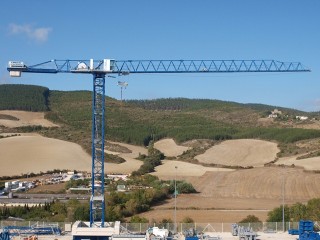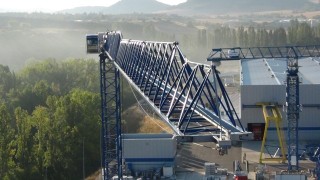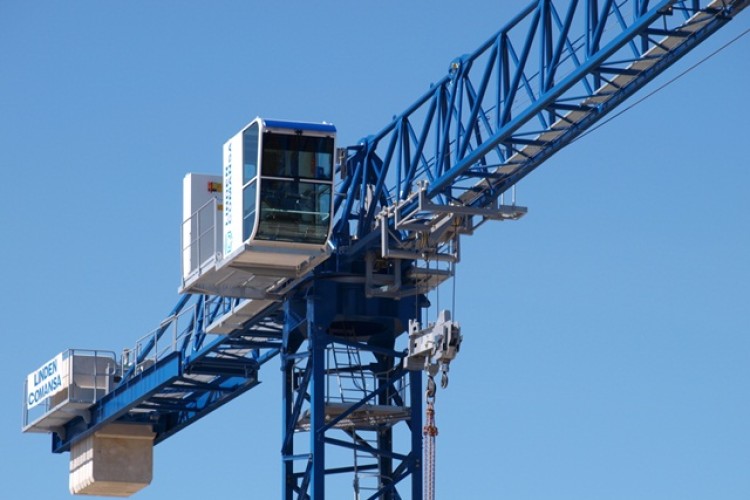The new LC 1600 tower crane series, with its load capacity of 8-12t, is midway in size between its LC 1100 (5-8t) and LC 2100 (12-48t) series.
The cranes stand 65m high and have 65m or 70m jibs, lifting between 1.8t and 2.15t at jib end.
The cranes of the LC1 600 series are the first from Linden Comansa to include frequency control in the slewing movement.
Development of the new series means that the tow smallest cranes in the LC 2100 series will be withdrawn, since the 16 LC 260 does much the same thing, only for less money.
Models in the LC 1600 series are the16 LC 185, 16 LC 220 and 16 LC 260.
|
MODEL |
VERSION |
MAX. JIB-LENGTH |
JIB END LOAD |
MAX. FREESTANDING HEIGHT |
HOIST MECHANISM |
|
|
STANDARD |
OPTIONAL |
|||||
|
16 LC 185 |
8 tons |
65 m |
1,950 kg |
65 m |
24 kW |
37 kW |
|
10 tons |
65 m |
1,800 kg |
65 m |
37 kW |
50 kW |
|
|
12 tons |
65 m |
1,800 kg |
65 m |
37 kW |
50 kW - 65 kW |
|
|
16 LC 220 |
10 tons |
65 m |
2,150 kg |
65 m |
37 kW |
50 kW |
|
12 tons |
65 m |
2,150 kg |
65 m |
37 kW |
50 kW - 65 kW |
|
|
16 LC 260 |
10 tons |
70 m. |
2,150 kg |
65 m |
37 kW |
50 kW |
|
12 tons |
70 m |
2,150 kg |
65 m |
37 kW |
50 kW - 65 kW |
The cranes of the LC1600 series all are designed as modular units, sharing components with each other and other Linden Comansa falt-tops. They share jib sections and counterweights with the LC1100 series. The counterjib of the LC1600 is compatible with the one from the LC1100 series. The trolley and hoist mechanisms and the trolley-hook joint of the cranes from the LC1100 series can be used in the cranes of the series LC1600 series.
With the LC 1600 series uses the same 2m-wide tower sections of the LC 2100 series, as well as the climbing cage and the 4.5m- and 6m-wide cross bases. With a transition section, the cranes of the LC1600 family can be erected on 2.5m-wide tower sections, to obtain freestanding heights beyond 100m.

The double trolley system of these cranes is similar to the one used in the LC1100 and LC2100 series, though it has been adapted to maximum loads of 12t. The trolley-hook joint, with pre-installed reeving, comes in a frame to ease the assembly, transport and storage.
The hoist mechanisms include the Effi-Plus System, which improves hoisting speed by up to 70% without any increase in power or electricity consumption.
The jib sections are narrow and the tower sections can be dismantled in panels. The heaviest element of the crane is 6t. Again, this all helps speed assembly. 
Got a story? Email news@theconstructionindex.co.uk



